Op solved the problem by the solution in this thread.
public void SetColoredStatusBar(string hexColor)
{
Device.BeginInvokeOnMainThread(() =>
{
if (UIDevice.CurrentDevice.CheckSystemVersion(13, 0))
{
UIView statusBar = new UIView(UIApplication.SharedApplication.KeyWindow.WindowScene.StatusBarManager.StatusBarFrame);
statusBar.BackgroundColor = Color.FromHex(hexColor).ToUIColor();
UIApplication.SharedApplication.KeyWindow.AddSubview(statusBar);
}
else
{
UIView statusBar = UIApplication.SharedApplication.ValueForKey(new NSString("statusBar")) as UIView;
if (statusBar.RespondsToSelector(new ObjCRuntime.Selector("setBackgroundColor:")))
{
statusBar.BackgroundColor = Color.FromHex(hexColor).ToUIColor();
}
}
UIApplication.SharedApplication.SetStatusBarStyle(UIStatusBarStyle.LightContent, false);
GetCurrentViewController().SetNeedsStatusBarAppearanceUpdate();
});
}
=========================================================================
Does you app support dark mode?
If you app is under DarkMode, the status bar text color will change to white. If you does not support Darkmode and still white for the Background of the NavigationBar and the TabBar, white text won't visible under white background.
You can use AppThemeBinding to set different color under different mode.
<Shell.Resources>
<ResourceDictionary>
<Color x:Key="NavigationPrimary">#2196F3</Color>
<Style x:Key="BaseStyle" TargetType="Element">
<Setter Property="Shell.BackgroundColor" Value="{AppThemeBinding Light=White, Dark=Black}" />
<Setter Property="Shell.ForegroundColor" Value="{AppThemeBinding Light=Black, Dark=White}" />
<Setter Property="Shell.TitleColor" Value="White" />
<Setter Property="Shell.DisabledColor" Value="#B4FFFFFF" />
<Setter Property="Shell.UnselectedColor" Value="#95FFFFFF" />
<Setter Property="Shell.TabBarBackgroundColor" Value="White" />
<Setter Property="Shell.TabBarForegroundColor" Value="Red"/>
<Setter Property="Shell.TabBarUnselectedColor" Value="Black"/>
<Setter Property="Shell.TabBarTitleColor" Value="Black"/>
</Style>
<Style TargetType="TabBar" BasedOn="{StaticResource BaseStyle}" />
</ResourceDictionary>
</Shell.Resources>
If you want to keep the status bar color same under different app theme, use a custom renderer:
[assembly:ExportRenderer (typeof(ContentPage), typeof(customPageRenderer))]
namespace App479.iOS
{
public class customPageRenderer : PageRenderer
{
public override void ViewDidAppear(bool animated)
{
base.ViewDidAppear(animated);
this.NavigationController.NavigationBar.BarStyle = UIBarStyle.Default;
}
//if you content page does not have a NavigationBar, oveerride this method
public override UIStatusBarStyle PreferredStatusBarStyle()
{
return UIStatusBarStyle.DarkContent;
}
}
}
And also add a key to info.plist:
<key>UIViewControllerBasedStatusBarAppearance</key>
<false/>
Refer: preferredstatusbarstyle




